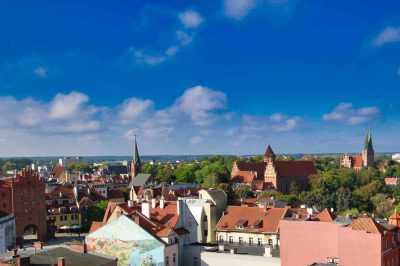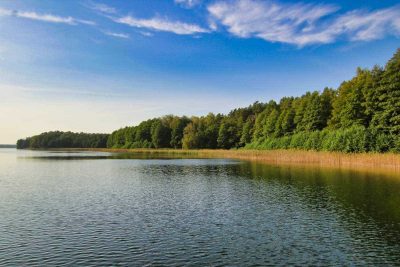After Olsztyn and Elbląg, Ełk, picturesquely situated on Jezioro Ełckie lake, is the third largest city in Warmia-Masuria. The town has developed into an important regional center and has numerous historic buildings. The town’s most famous son was the writer Siegfried Lenz, who was born here in 1926 and wrote about his Masurian homeland in many of his works. In the following article, we take you on a trip to the south-east of Masuria and introduce you to the most beautiful sights in Lyck.
The pagan Sudau people originally settled here before they were subjugated by the Teutonic Order at the end of the 13th century. Lyck flourished in the 16th century, when an important trade route from Königsberg to Vilnius ran through the town and the printing industry turned the town into an important intellectual center.
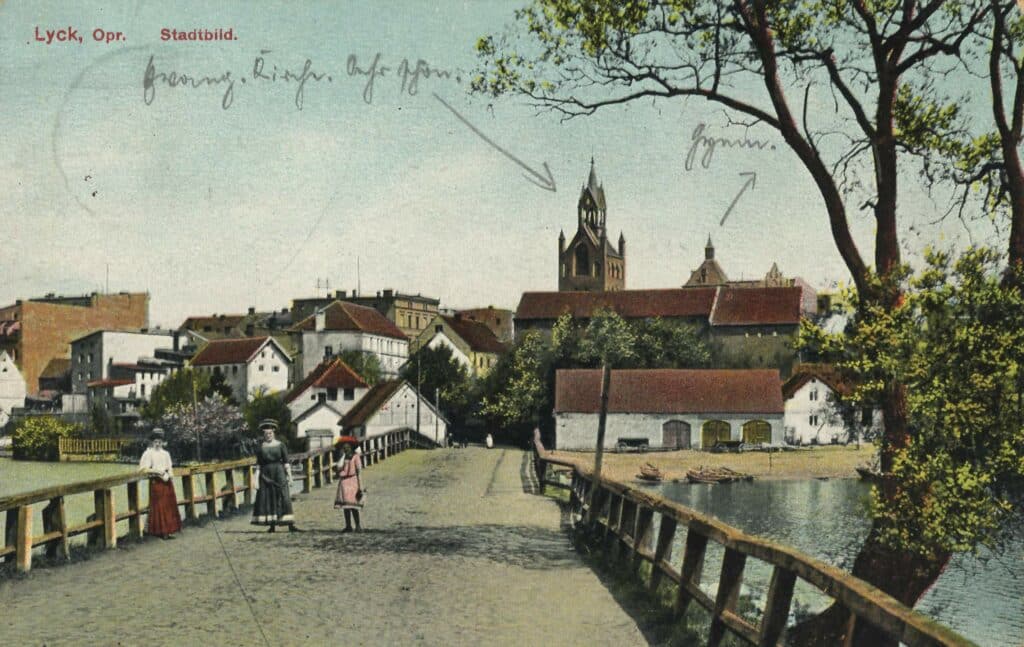
Many industrial companies settled here after the Second World War. However, Lyck is now taking advantage of its picturesque location and is increasingly developing into a vacation resort. The industrial companies ensured that the population literally exploded after the war. While around 16,000 people lived here in 1939, today there are over 60,000.
But enough of the preface, you are probably already curious about what there is to see and experience in Ełk, so here we go and present the most beautiful Ełk sights!
Ełk old town
It is not easy to find your way around the extensive old town of Lyck. It is hard to overlook the fact that many buildings were lost during the Second World War and gaps between buildings were filled with relatively unimaginative structures. Nevertheless, the town has a historically evolved structure and the preservation of the Art Nouveau and classicist buildings is a high priority. The best thing to do is to drift through streets like ul. Mickiewicza to take in the special architectural mix of young and old.

Adalbert Cathedral (Katedra św. Wojciecha)
Together with St. Mary’s Church in Goldap, the three-nave Adalbert’s Cathedral is the most important place of worship in eastern Masuria and the seat of the bishop of the diocese of Lyck, whose territory extends into the Belarusian-Lithuanian border region. The neo-Gothic church was built in the 1880s and still has some Gothic interior furnishings from older places of worship. Miraculously, the church was not destroyed in the Second World War. South of the church, you will come to a huge street art painting depicting Pope John Paul II.
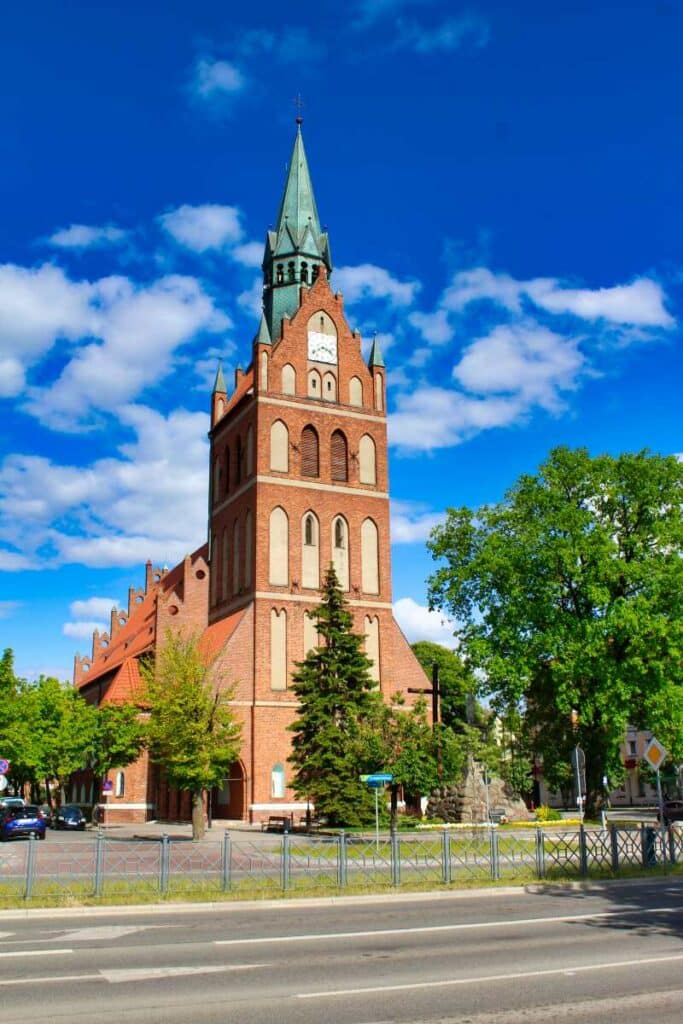
Sacred Heart Church (Kościół Najświętszego Serca Pana Jezusa)
In the 19th century, a large church by a student of Schinkel was built in the middle of the town to serve as a place of worship for the Protestant community. After it was destroyed by Russian troops during the First World War, a new church was built between 1922 and 1925 using older building elements, which was strongly based on Gothic models from the region. Fortunately, the Herz-Jesu-Kirche survived the Second World War almost unscathed and was subsequently repaired by the new Catholic community.
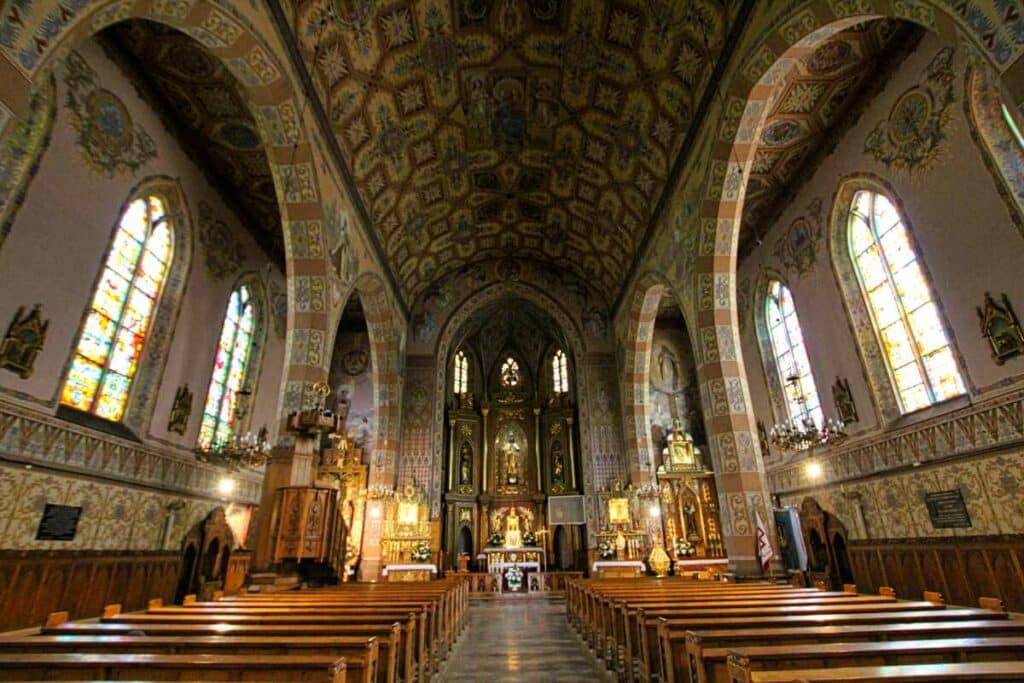
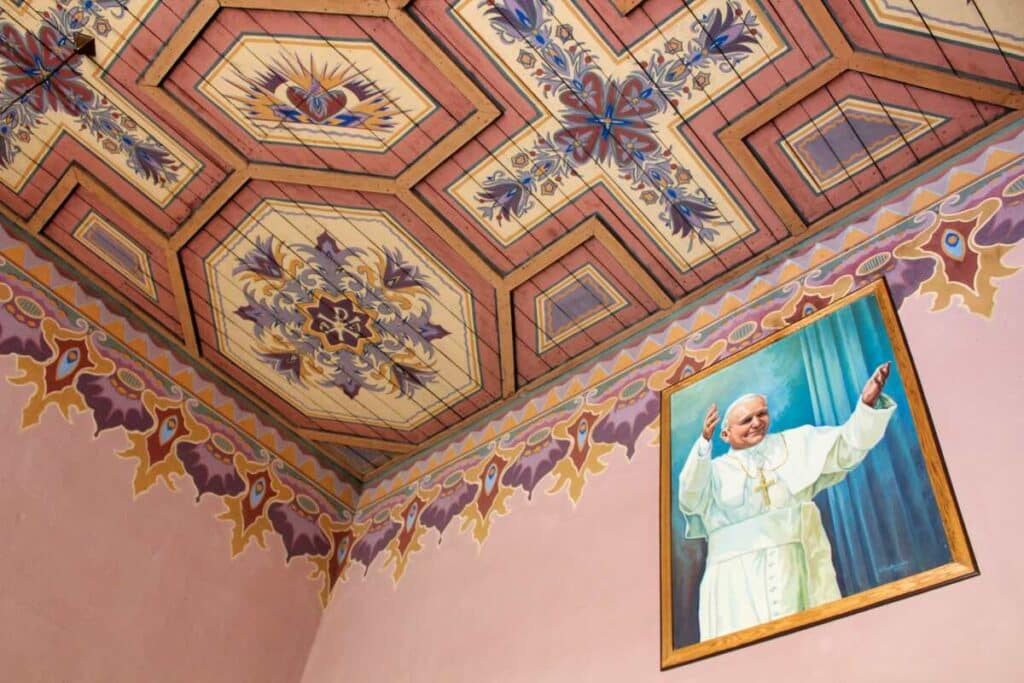
The interior is colorfully decorated, has an organ from Hanover and is covered in ornaments reminiscent of medieval Byzantine frescoes. This may seem a little kitschy, but it leaves a harmonious overall impression.
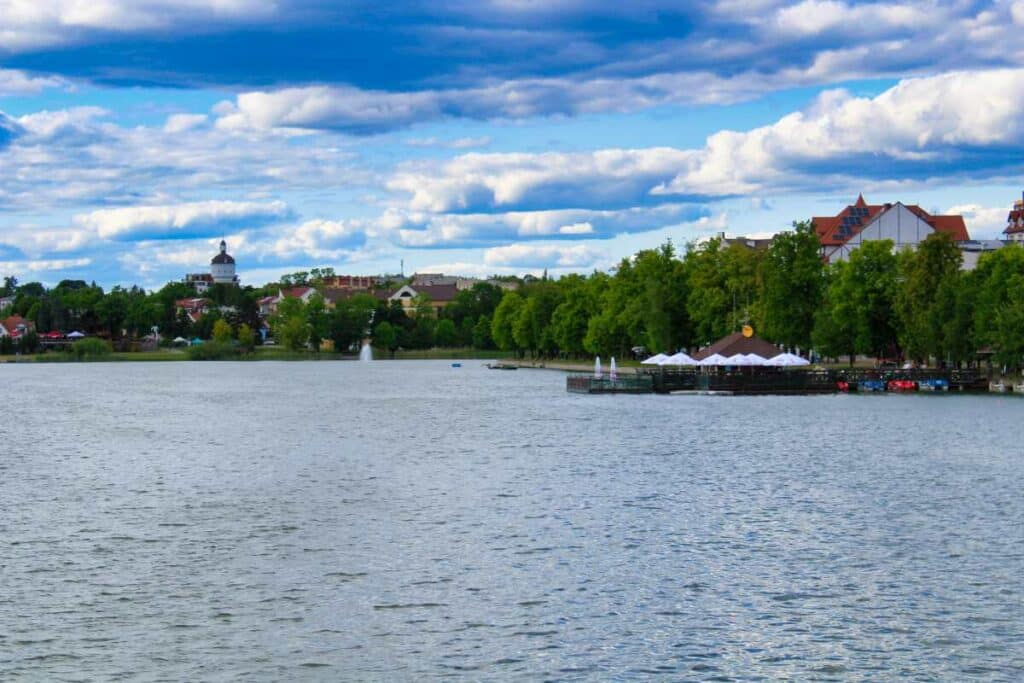
Waterfront
The riverside promenade has been developed into a well-maintained promenade in recent years and is one of Lyck’s most beautiful sights. Numerous restaurants and boat hire companies await customers here. A stroll in the evening, when the sun seems to sink into the lake, is particularly beautiful. Continue over a bridge to the former Ordensburg castle or take a walk north to the water tower.
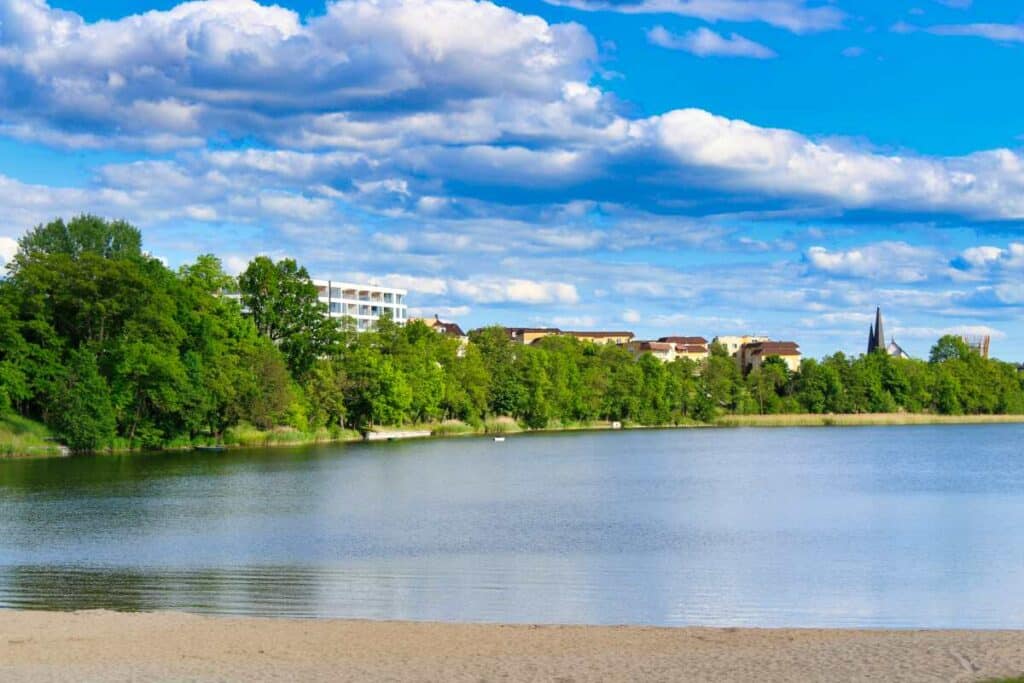
You can also simply relax on the small beach and take a dip. There is also a small park nearby where historical agricultural equipment is on display.
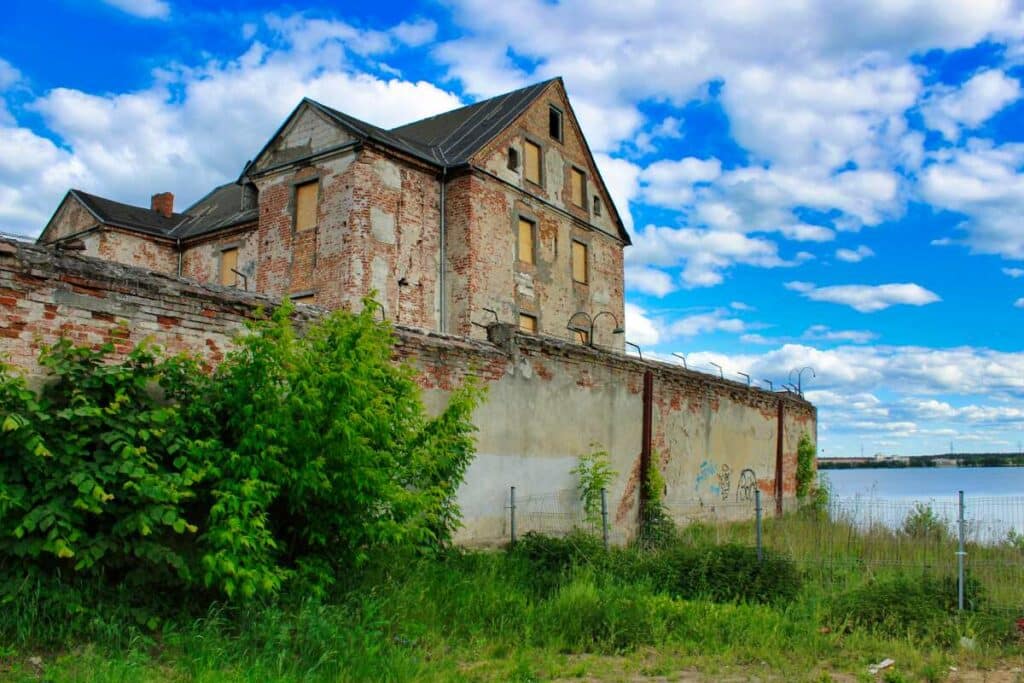
Castle of the Teutonic Knights (Zamek Krzyżacki)
At the end of the 14th century, the Teutonic Order built its easternmost castle here. It would have been hard to choose a more beautiful (and better defended) location than the island in Lake Lyck. It is connected to the shore by a bridge. The castle burned down in the mid-15th century, but was rebuilt in a slightly modified form. At the end of the 18th century, the castle fell into disrepair and was therefore partially demolished. It was used as a prison until the 1970s. After that, the building stood empty for a long time, which is rather surprising given the tourist potential of this location. An investor has since acquired the property and is converting it into a luxury hotel, but not much had been done when I last visited in 2023.
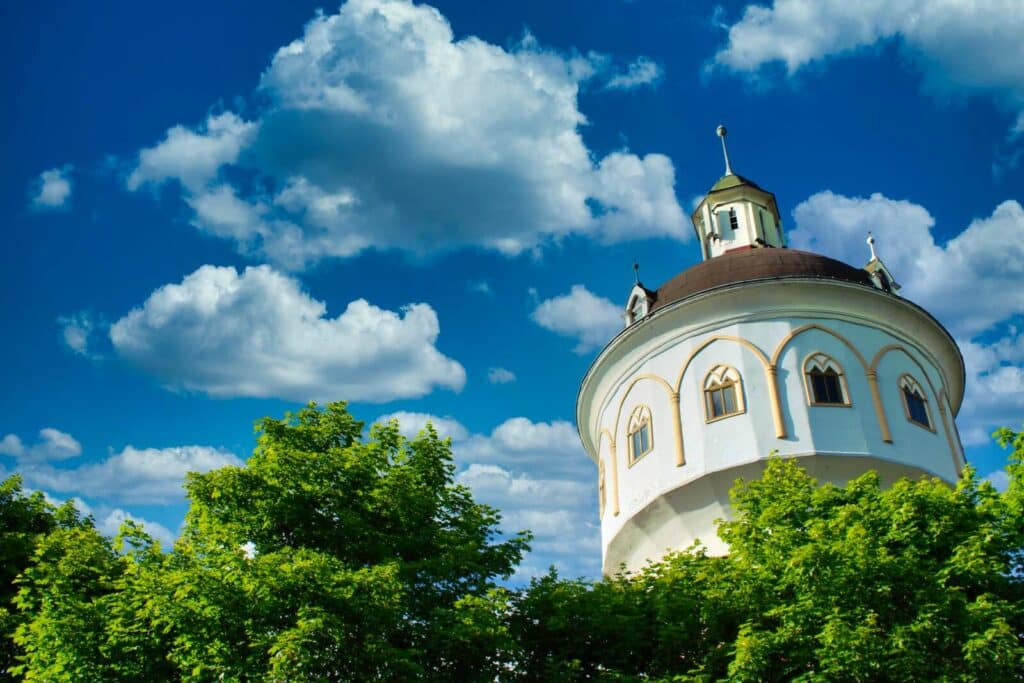
Water Tower (Wieża ciśnień)
The water tower in the north of the city center was one of the first in the region to be put into operation back in 1895 and is also one of the best preserved in the whole of Masuria. The five-storey building is divided into three separate construction phases. At the time of its inauguration, the water tower was able to supply around 20,000 residents with drinking water. Today, an association of the German minority has its headquarters here. The tower also houses a small exhibition, the Museum of the Water Drop. It displays everyday objects from the life of the people of Lyck, technical equipment relating to water and old photos from the time before the war. From the top, you have a beautiful view of the town.
Lyck Historical Museum (Muzeum Historyczne w Ełku)
The town’s Historical Museum is now housed in the old narrow-gauge railroad station building (see below). On the grounds, you can not only learn a lot about the history of the city, but also marvel at some historic trains. There is also a small park where children can learn about physical phenomena in a playful way. Changing exhibitions are shown inside. By the way: the museum’s operators, led by dedicated historian Dr. Rafał Żytyniec, are still looking for exhibits from the town’s history before 1945, so if you had ancestors in Lyck or the surrounding area, please get in touch with us and we will pass on old family photos, postcards, memories etc.!
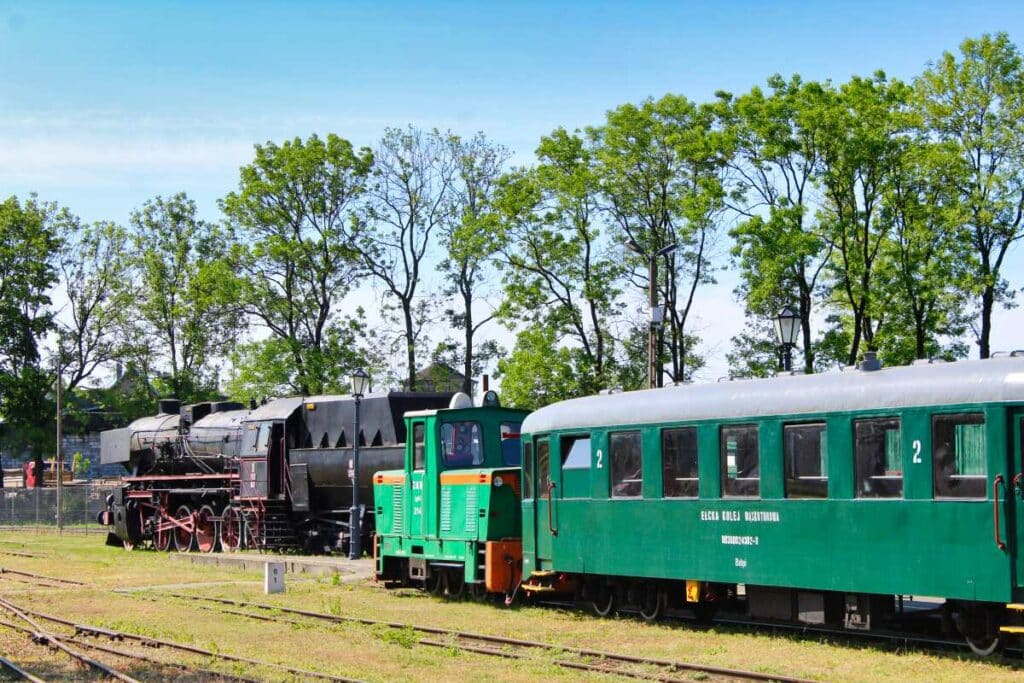
Ride with the narrow gauge railroad
The Lycker Kleinbahn was put into operation during the First World War. A ride on the narrow-gauge railroad, which chugs from the station to Sypittken (Sypitki), just under 20 kilometers away, is a special experience, especially for families with children. If you’re lucky, you might catch a historic steam locomotive; if you’re unlucky, you might catch a relatively ordinary diesel locomotive. Once you arrive at your destination, you can fortify yourself with Masurian specialties in a restaurant or simply bring your own barbecue equipment and use the sticks to grill a sausage over an open fire. There is also a large playground! Incidentally, the narrow-gauge railroad inspired Lenz to write his short story “Eine Kleinbahn namens Popp”!
Lyck sightseeing book tip
Do you fancy a trip to Masuria and Warmia? Then order my brand new travel guide to Masuria from Reise Know-How Verlag now! In addition to the most important sights in Lyck, it also presents all other touristically relevant places in the region, contains lots of practical tips and numerous exciting background articles on the country and its people.
- Bingel, Markus (Author)
Der renommierte Historiker Andreas Kossert beschreibt in diesem Band zwar keine Lyck Sehenswürdigkeiten, dafür aber die bewegte Geschichte Masurens.
- Kossert, Andreas (Author)
Lenz’s declaration of love for his homeland has been wonderfully illustrated in this special edition, bringing life in old Masuria back to life. The book is a collection of short stories in which the everyday language of Masuria comes to life, as it is unfortunately extinct today. In later years, Lenz himself described the book as a “winking declaration of love to [my] country”. Besser hätte man es nicht beschreiben können!
- Lenz, Siegfried (Author)
How did you like our article on the sights of Lyck? Which place should we visit for you soon? Let us know and write us a comment!


